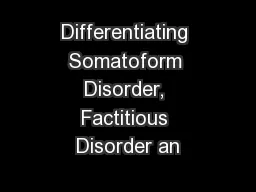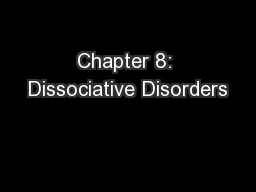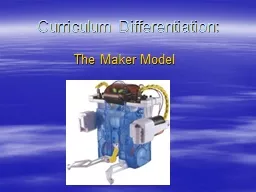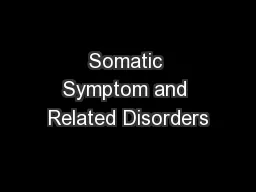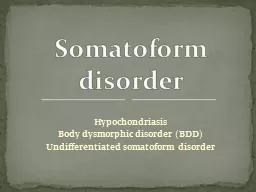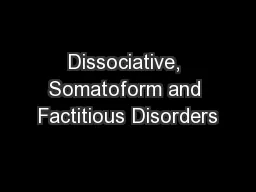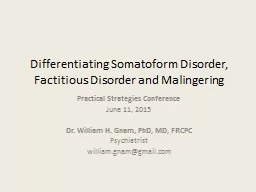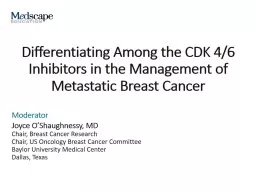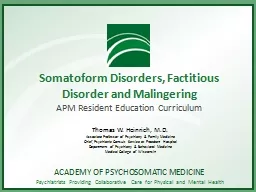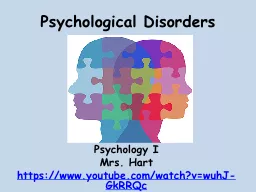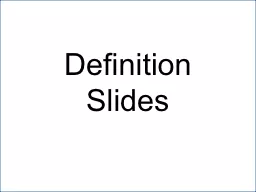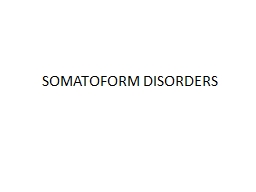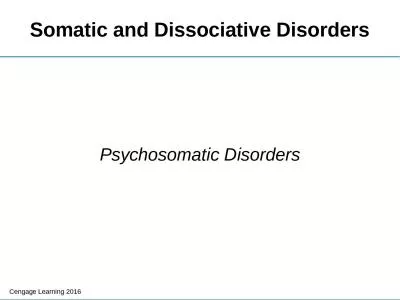PPT-Differentiating Somatoform Disorder, Factitious Disorder an
Author : test | Published Date : 2016-04-11
Practical Strategies Conference June 11 2015 Dr William H Gnam PhD MD FRCPC Psychiatrist w illiamgnamgmailcom Outline Introduction The diagnostic m ethods of
Presentation Embed Code
Download Presentation
Download Presentation The PPT/PDF document "Differentiating Somatoform Disorder, Fac..." is the property of its rightful owner. Permission is granted to download and print the materials on this website for personal, non-commercial use only, and to display it on your personal computer provided you do not modify the materials and that you retain all copyright notices contained in the materials. By downloading content from our website, you accept the terms of this agreement.
Differentiating Somatoform Disorder, Factitious Disorder an: Transcript
Download Rules Of Document
"Differentiating Somatoform Disorder, Factitious Disorder an"The content belongs to its owner. You may download and print it for personal use, without modification, and keep all copyright notices. By downloading, you agree to these terms.
Related Documents

